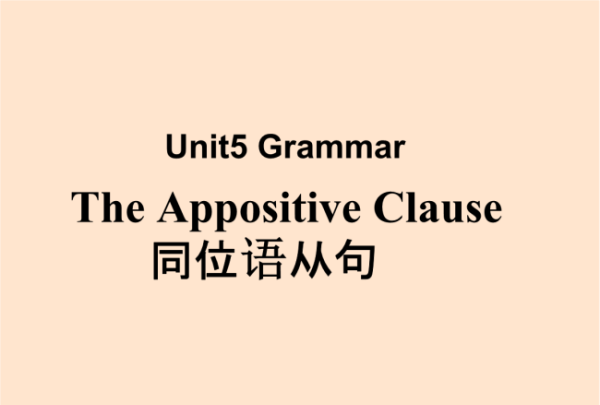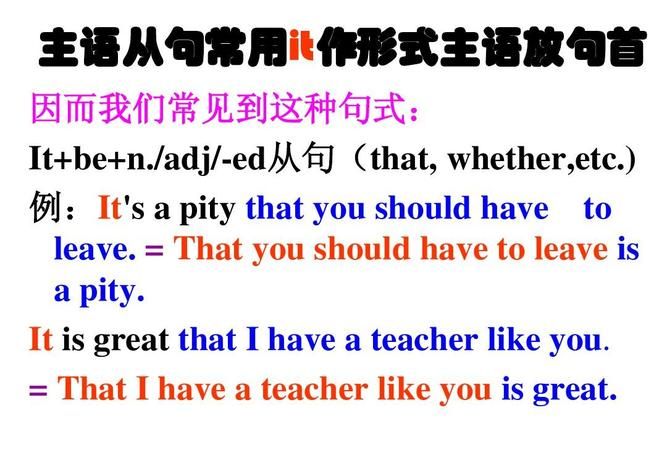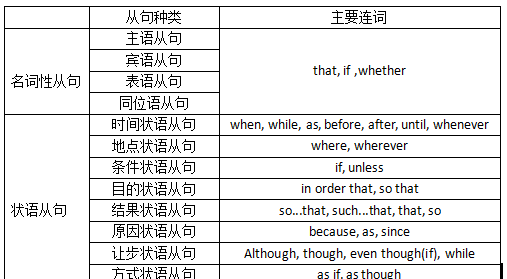本文目录
that引导的同位语从句
The news that he won the first prize made us excited.
这个就是一个同位语从句

同位语从句经典例句
1、由whether引导的同位语
例句:We are not investigating the question whether he is trustworthy。
我们不是在调查他是否能够信任的问题。
2、由that引导的同位语
例句:He referred to Copernicus’ statement that the earth moves round the sun。
他提到了哥白尼关于地球绕太阳转的说法。

3、由连接副词引导的同位语
例句:I have no idea when he will e back。
我不明白他什么时候回来。
4、由连接代词引导的同位语
例句:Have you any idea what time it starts?
你明白什么时候开始吗?
5、关于分离同位语从句
例句:The news got about that he had won a car in the lottery。
消息传开说他中彩得了一辆汽车。
同位语从句经典例句带逗号
同位语从句经典例句有:
1、Theywereworriedoverthefactthatyouweresick.
他们为你生病发愁。
2、Answermyquestionwhetheryouarecoming.
你回答我的问题:你来不来等。
3、Ihavenoideawhathashappenedtohim.
我不明白他发生了什么事。
4、Therewasnodoubtthatheishonestman.
毫无疑问他是诚实的人。
5、YouhavenoideahowworriedIwas.
你不明白我当时有多担忧。
在复合句主句中名词性成分之后与该名词性成分并列,补充说明该名词性成分的有关情况的名词性从句,被称为同位语从句。引导同位语从句的词语通常有连词that、whether,连接代词和连接副词等。

同位语用法及句子示例
同位语概念:一个名词(或其它形式)对另一个名词或代词进行解释或补充说明,这个名词(或其它形式)就是同位语。
例句:The report that he was going to resign was false.(他将辞职的报道是假的。)在此句中,that he was going to resign就是对report内容的说明,因此that引导的就是同位语从句。
The news that he won the match is so exciting.他赢得比赛的消息是如此的振奋人心。
这里that引导的从句做的就是同位语从句。因为that引导的从句就是the news的内容,是对the news 的进一步阐释,所以是同位语从句。
但是很多人很容易将同位语从句和定语从句搞混,请看下面的例句。
He is the man whom/ that I saw yesterday. 他就是我昨天见的那个人。
whom/that引导的从句在此句中引导的就是定语从句。从句和he的关系是从句对he进行限制,哪个he,昨天我见到的那个he.所以,只有汉语意思分析出来的话,就很好判断了。

扩展资料
用法
一个名词(或其它形式)对另一个名词或代词进行修饰,限定或说明,这个名词(或其它形式)就是同位语。
同位语与被它限定的词的格式要一致,并常常紧挨在一起。
同位语从句即重复说明同一个称谓或事件的从句。
名词作同位语
Mr Wang,my child’s teacher,will be visiting us on Tuesday.
王先生,我孩子的老师,星期二要来看我们。
(在这里'my child's teacher'做同位语修饰'Mr Wang')
短语作同位语
I,the oldest girl in the family,always had to care for the other children.
我,作为家里最大的女孩,总是要照料家中的其他孩子。
直接引语作同位语
But now the question comes to their minds,“Did she die young because she was a clone?”
但是现在他们不得不思考这样的问题:“多莉早死是因为它是一只克隆羊吗?”
句子作同位语
The girls were surprised at the fact that ocean ships can sail up the Great lakes.
巨大的海轮可以开到五大湖,让表姐妹俩感到吃惊。
固定用法
同位语部分是个句子,就是同位语从句,这种用法比较"固定"
一、在复合句中用作同位语的从句叫同位语从句。它一般跟在某些名词后面,用以说明该名词表示的具体内容。
I heard the news that our team had won.
我听到了我们队获胜的消息。
二、可以跟同位语从句的名词通常有news,idea,fact,promise,question,doubt,thought,hope,message,suggestion,words(消息),possibility,decision等(一般的“抽象”名词都可用)。
I’ve come from Mr wang with a message that he won’t be able to see you this afternoon.
我从王先生那里来,他让我告诉你他今天下午不能来看你了。
三、英语中引导同位语从句的词通常有连词that,whether,连接代词what,who。连接副词how,when,where等。(注:if不能引导同位语从句。)
He must answer the question whether he agrees with it or not.
他必须回答他是否同意这样一个问题。
四、有时同位语从句可以不紧跟在说明的名词后面,而被别的词隔开。
The thought came to him that maybe the enemy had fled the city.
他突然想起敌人可能已经逃出城了。
参考资料:百度百科 同位语从句
以上就是关于that同位语从句例句 ,that引导的同位语从句的全部内容,以及that同位语从句例句 的相关内容,希望能够帮到您。
